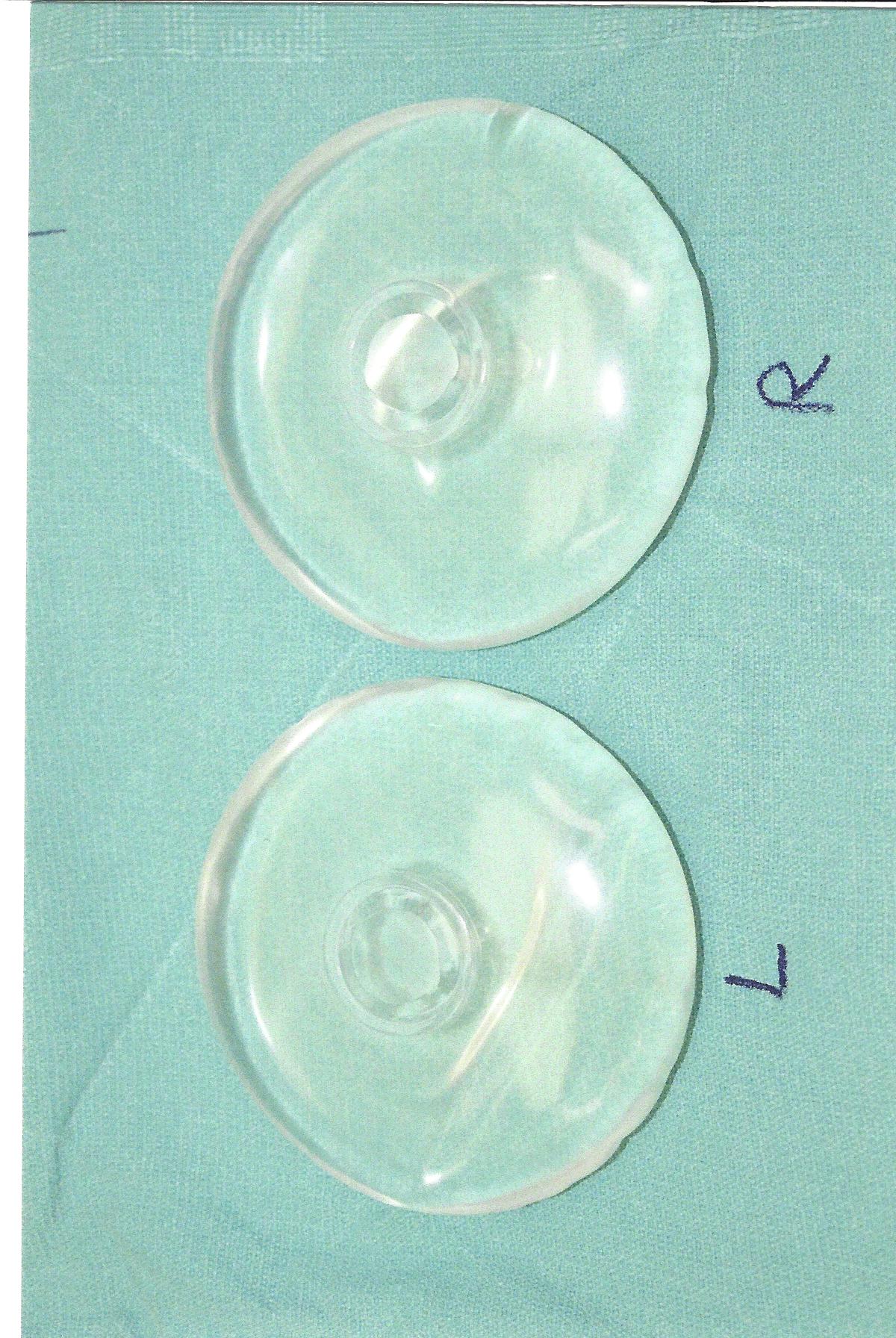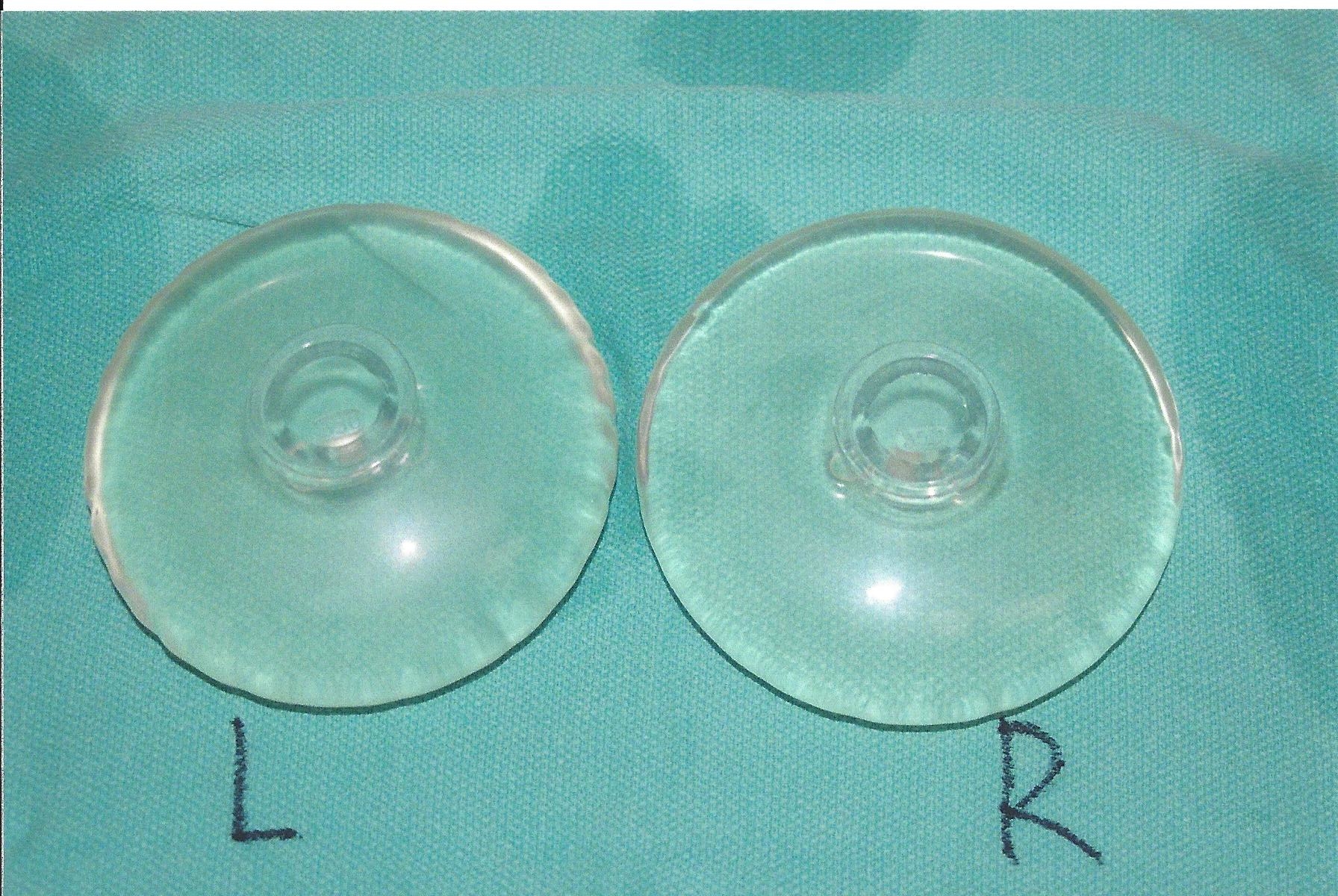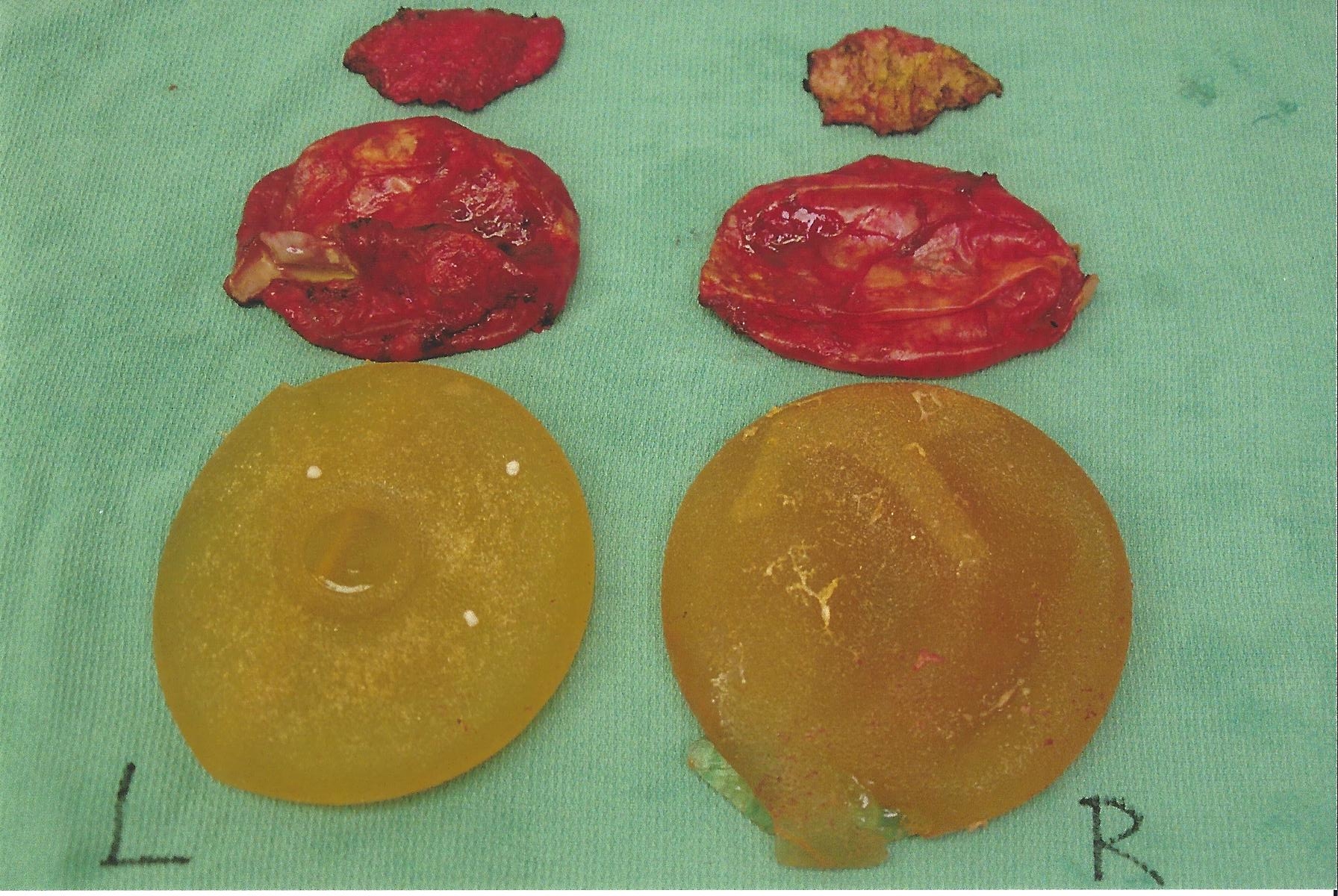
Above: Saline implants removed after 16 years.
I am often asked if breast implants need to be replaced every ten or fifteen years, or on some sort of schedule based simply on their age. My answer to that question is no. Let me explain.
Every prospective breast implant recipient, whether for cosmetic or reconstructive reasons, must understand that breast implants are not expected to be lifetime devices. Anything manmade wears down over time and implants are no exception. There is natural wear and tear as well as gradual deterioration of the material itself. The question of how long they should last is a complex one and there is no single right answer for everyone.

Above: a pair of saline implants removed after 18 years.
The most common cause of implant failure, i.e. leaking or rupturing, is fold fracture failure. This is analogous to what happens when you bend a rigid piece of plastic back and forth a few times; it cracks. Implant shells are very flexible but if you bend them in the exact same place a few million times, they can crack as well. Saline implants have a failure rate on the order of 1% per year. That means that every year the failure risk goes up, 10% at ten years, 25% at twenty five years, and so on. The failure rate for textured implants is higher because the implant shell is stiffer in textured implants.
A study reported in 1999 showed that the failure rate for gel implants was a high as 30% over 5 years, rising to 70% over 17 years. These early generation implants had a thin shell and a more liquid gel. In the mid-2000’s gel implants began to be made with progressively thicker, more cohesive gel that did not run. This culminated in the so-called “gummy bear” implant. You can cut this implant in half, like a gummy bear, and the gel does not run. Failure rates for the cohesive gel implants are hard to come by because failure is not always obvious, as with saline implants. It is estimated to be 3-5% over 9-10 years, if that.

Since they don’t leak, why not just use gummy bear implants in everyone? There are a number of reasons. For one thing, they can “fracture”, changing the look of the breast. They are much more expensive, require a larger incision, and many patients do not like the firmer feel of the implant. Alas, the perfect implant has not yet been made.
Besides actual failure, the other concern is for deterioration of the implant over time. The implant shell may shed microscopic particles of silicone, especially textured implants. These can be found in the capsular scar tissue surrounding the implant, in the breast tissue, and even in lymph nodes near or distant from the breasts. This has raised questions of how much this occurs, over what period of time, and whether this has any potential to cause harm. We know that exposure to silicone in the environment from a variety of sources is a universal phenomenon; does the presence of breast implants change the equation? Sadly, there is not consensus on this.

Above: 28 year old gel implants with calcified capsules and scar.
In my thirty one years of practice I have removed innumerable implants that were in for ten years, twenty, thirty and longer. Some looked horrible- ruptured with silicone gel free in the implant pocket, nodules of silicone gel in the tissues, the implant shell yellowed, the capsule extensively calicified. Regardless of how awful these implants looked, I do not recall a single one of these women experiencing the types of systemic symptoms that have been attributed to breast implants. Ironically, the few implants I have removed due to possible symptoms related to those implants looked nearly perfect, almost like the day they went in.
In my opinion, at this point in time there is no good justification to support the contention that all women should replace their implants every ten, fifteen, twenty years or more after they were put in. I tell patients who ask that so long as they feel well and are not having any issues with their breasts or implants that they are aware of, that they do not need to be removing and replacing them. I qualify this by telling them that they should get their breasts and implants periodically checked by a plastic surgeon, suggesting every other year as a reasonable schedule. This is especially important for patients with older gel implants that have the more runny gel and thinner shell. If in doubt about the status of the implant, a mammogram or MRI can help establish integrity or leakage.
I have always offered to check my patients’ implants without charge indefinitely. In my experience, fewer than 5% of patients ever return for a checkup. Even sending out reminders such as postcards does not seem to get patients back. I wish I had an explanation or solution to this, but I do not. Many women, especially young women, do not seem to take implant surgery seriously.





